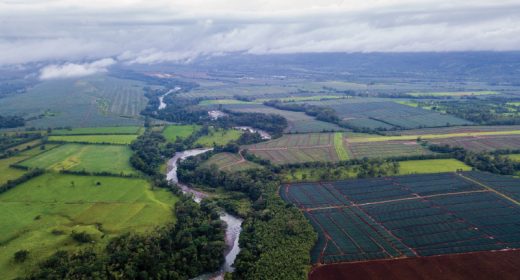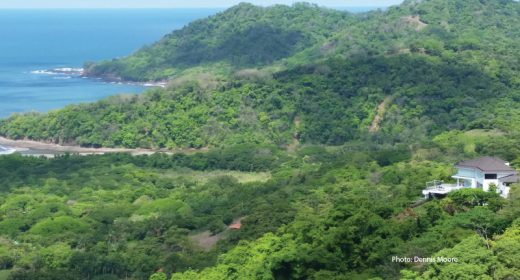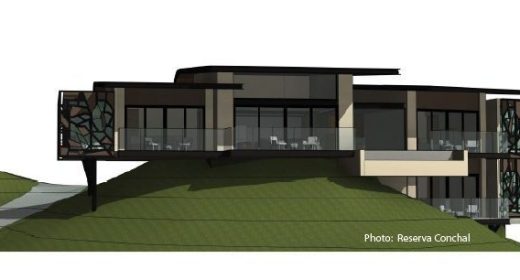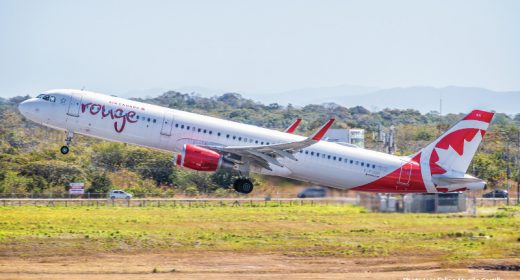
Hope Spots: Save the Planet one Sea Spot at a Time
- SEP 02, 2019Warning: count(): Parameter must be an array or an object that implements Countable in /home/howlermag/public_html/old/wp-content/themes/new-paper/includes/general.php on line 193

Your Lead Paragrpah goes here
Hope for Our Blue Heart: One sea spot at a time, we can save the planet. Imagine boating, diving, or surfing in Costa Rica’s warm tropical waters and not seeing a single sign of marine wildlife: no rays jumping, no humpback whales breaching, no colorful coral dwellers peeking out as you snorkel by. Imagine the sky without sea birds and the surface of the ocean free of sea turtles popping their heads out for a quick breath. Imagine the eeriness of swimming in an ocean utterly void of life..
Now, imagine if you had to be the one to tell future generations that there were once 100-foot-long whales, sharks with heads shaped like hammers, long needle-like fish that could fly and pelicans that surfed.
Over the past century, we have collectively managed to decimate formerly thriving populations of sharks and other pelagic fish, whales and dozens of other marine mammals, sea turtles, and countless other ocean-dwelling species that both humans and other wildlife and ecosystems depend upon. Through a combination of unsustainable fishing practices, the horrific shark fin industry, habitat destruction, pollution, the plastic epidemic and climate change, our oceans are not as indestructible as they were once believed to be.
‘No water, no life.
No blue, no green.’
All life is at stake
Whether you live by the ocean or not, whether you visit seashores during summertime or not, every one of us is dependent on its survival and wellbeing. Throughout human history, the ocean has provided us with an abundance of food and other resources. But more importantly, it is the driving force behind the earth’s weather patterns, a regulator of land temperatures, a vital collector of carbon and a massive producer of oxygen.
“No water, no life. No blue, no green.” These famous words spoken by marine conservation activist Dr. Sylvia Earle should be our collective mantra and motivation to protect what so many of us love, and all of us need. Not to mention, it is not the fault of the sharks, manta rays or tiny plankton that the ocean is dying. It is our fault and our responsibility to fix.
In 2009, Dr. Sylvia Earle won the prestigious TED Prize. It was then that she conveyed her wish for humankind to “use all means at [our] disposal — films, expeditions, the web, new submarines — to create a campaign to ignite public support for a global network of marine protected areas, Hope Spots, large enough to save and restore the blue heart of the planet.”
For the past 50 years, Earle has been the voice of our seas, working tirelessly to help save and restore the planet’s blue heart. At the time of her TED Talk in 2009, only 1 percent of the world’s oceans were protected. As of 2016, that number has increased to 4 percent; it’s an improvement but not nearly enough.
Intensive global collaboration
Fortunately, Mission Blue, founded by Earle, is collaborating with hundreds of different marine conservation organizations, scientists, policymakers and ocean-lovers alike to designate Hope Spots around the globe. In fact, anyone can nominate a Hope Spot. The goal is to have 30 percent of the ocean protected by 2030.
Through rigorous research and expeditions, Hope Spots, according to Mission Blue, are chosen and designated based on:
-
- A special abundance or diversity of species, habitats, or ecosystems
- Particular populations of rare, threatened, or endemic species
- A site with potential to reverse damage from negative human impacts
- The presence of natural processes such as major migration corridors or spawning grounds
- Significant historical, cultural, or spiritual values
- Particular economic importance to the community
More than 100 Hope Spots worldwide now include a recently added location in Costa Rica’s Golfo Dulce. Costa Rica was also involved in the protection of the Central American Dome, another Hope Spot 300 miles off the north Pacific coast between Costa Rica and Nicaragua. MarViva Foundation and Misión Tiburón, along with several other organizations in Costa Rica, played an integral part in ensuring that these two Hope Spots were nominated and established.
The Central American Dome is a nutrient-dense area in the high seas, continuously changing its position and size depending on the direction of winds and strong ocean currents. It is a crucial feeding ground in the eastern Pacific for the highly endangered leatherback sea turtle and blue whale, as well as many different species of sharks, manta rays, billfish, tuna, sardines and anchovies.
Inspiring initiative
Because of the Central American Dome’s remote and ever-changing coordinates, protecting this Hope Spot relies on the cooperation of several countries and governments. It is inspiring what can be accomplished when we work together.
In 2014, National Geographic, MarViva Foundation, Mission Blue, Lighthawk and The Leatherback Trust joined forces to document an awareness-raising expedition to the Central American Dome. Similarly, Misión Tiburón had been conducting research, collecting valuable data, promoting educational campaigns and advocating for the protection of Golfo Dulce in southern Costa Rica.
Vulnerable marine species
“Golfo Dulce is a proven pupping and nursery grounds for the endangered scalloped hammerhead shark. According to Mission Blue, evidence supports a direct “biological connection between the scalloped hammerhead sharks in this critical coastal habitat and the surrounding waters of Isla del Coco.” (See the Howler Cover Story and related Sea Shepherd update)
Before the official protection of Golfo Dulce and its recognition as a Hope Spot this year, juvenile scalloped hammerhead sharks, which are too small to be illegally harvested for their fins, were caught and used as bait to attract larger sharks. Golfo Dulce is also home to the green sea turtle, humpback whales, sperm whales, bottlenose dolphin, manta rays and hun-dreds of other species of sharks and fish.
Everything and everyone is connected. What we do on land affects the sea and vice versa. When apex predators like sharks are removed, and bottom-of-the-food-chain species like plankton, krill and sardines are gone, the entire ocean food chain will collapse. Hope Spots help to ensure that this doesn’t happen. So, naturally, the more Hope Spots that can be established, the more hope there is that the ocean will heal and thrive once again as it did and is meant to.
No blue, no you!
Noble alliances like Mission Blue, MarViva Foundation, Misión Tiburón, The Leatherback Trust, National Geographic, High Sea Alliance, and the International Union for Conservation of Nature are doing extraordinary things to protect the world’s “blue heart.” However, time is of the essence. To ensure we don’t experience what an ocean devoid of life is like, we must all get on board now. The call to action is simple, but urgent: No blue, no you!
Now, imagine an ocean setting where you watch sea turtles swimming by, iridescent fish schooling around, a dolphin dancing in the distance and countless sea birds effortlessly gliding on the airwaves. Imagine an ocean with more fish than plastic, with a healthy population of sharks to keep our blue heart in rhythm, and a sense that all is right because we fixed what we have long wronged. This reality doesn’t have to be the stuff of our imaginations.
Other HOWLER Fun Adventures in Costa Rica
Rincon de la Vieja – Things to do
4×4 Lake Arenal – road to El Castillo
Lucky Lovers Leap into an adventure of a lifetime
Lake Arenal – Lost Canyon Adventure
Gone Fishing: worst day fishing beats the best day working
Seven Days in Costa Rica: Arenal, Dominical and More
Lake Arenal: Safari River Float is a slow boat to paradise
Gone Sailing in Guanacaste Costa Rica
Cocos Island, Costa Rica’s treasure
Stand Up Paddle boarding SUP
ATV Tours, Take the road not taken
Deep Sea Fishing, Fun and Flamingo Costa Rica
White water rafting in Costa Rica
Scuba Diving in Costa Rica
Costa Rica Combo Adventure Parks
Authentic Costa Rica: What to do in rural Bijagua
Blue River Resort and Hot Springs
Pura Vida: health, wellness and yoga articles
Costa Rican Army Abolished: One more reason for happiness?
Feature Article – Living longer in Costat Rica Blue Zone
Costa Rica Yoga and Wellness Retreats
Yoga Wisdom – Power of Yoga: Yamas and Niyamas
Yogapedia – Vrksasana: Tree Pose
Natural Medicine – CBD Oil: Nature’s Miracle Cure?
Mindfulness: Natural High: Benefits of Nature
Psychological Well Being – Counseling Help in Costa Rica
Eat Well: Costa Rica Superfoods – Nutrient Dense Food
Costa Rica Medical Tourism
Costa Rica Dental Tourism: Veneers – Reason to Smile









